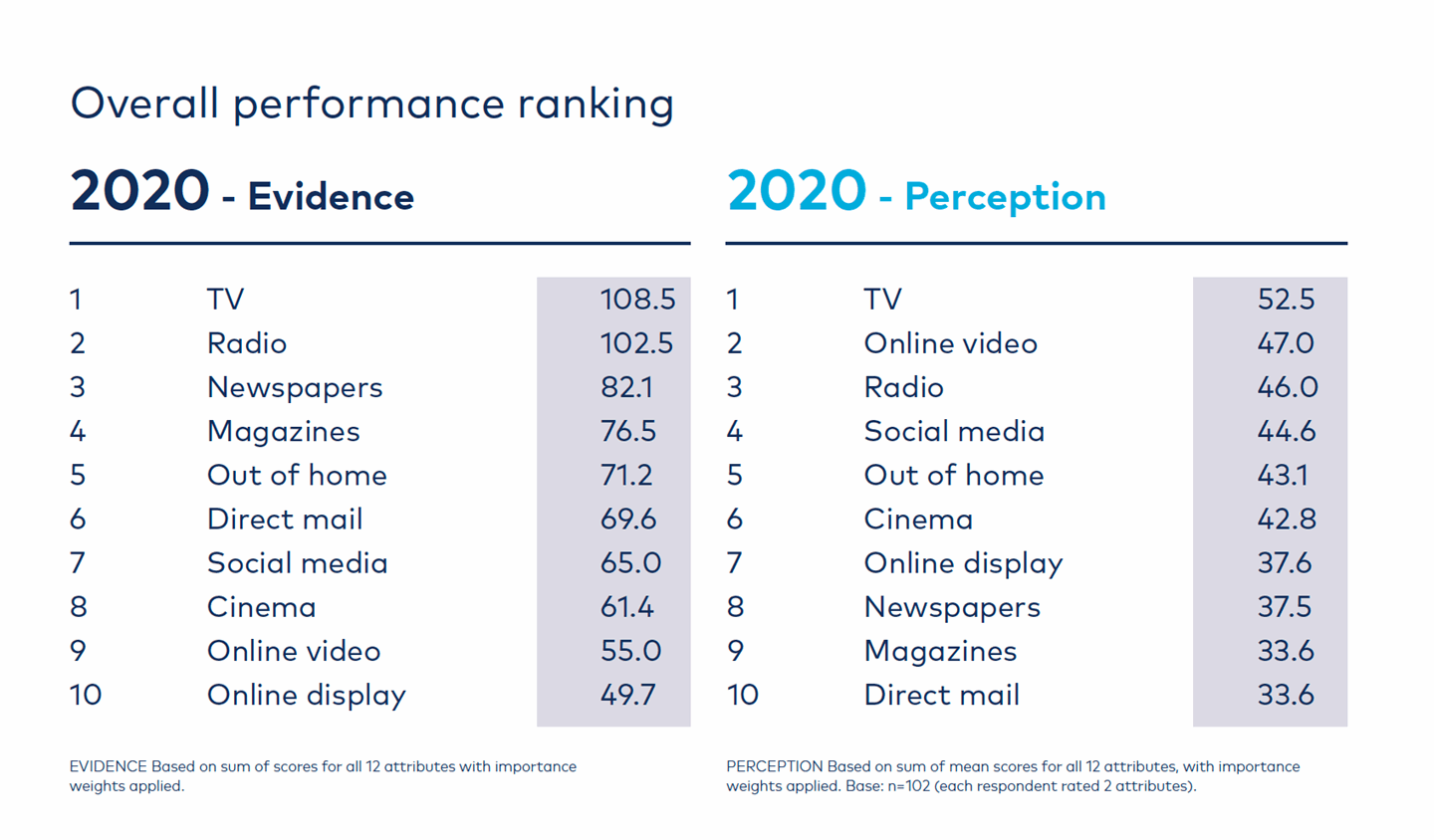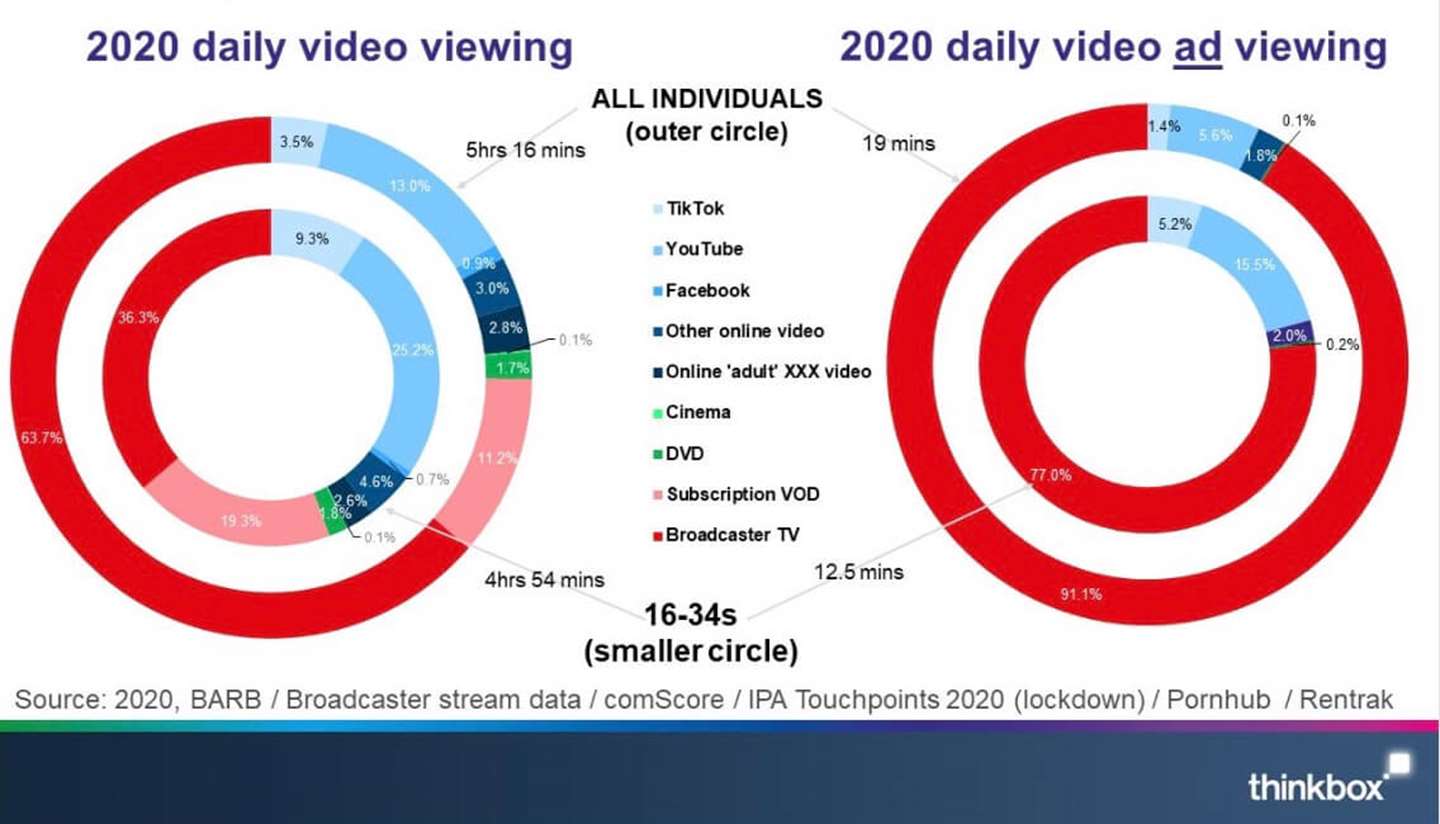In 2018 Ebiquity and Radiocentre’s initial Re-evaluating Media report showed the perceived advantages of typically digital media in meeting campaign objectives, and how they diverged from reality. Evidence from a great number of sources showed the score of the different media channels on 12 attributes. The five most important attributes of any advertising channel were: targets the right people in the right place at the right time; increases campaign ROI, triggers a positive emotional response, increases brand salience , and maximises campaign reach.
Based upon the evidence (available research) each medium received a score on each attribute. Marketers and agency professionals were asked to score also the same channels on each attribute.
The 2018 study showed the gap between evidence and perception, especially for print media. Evidence put newspapers and magazines overall performance on position 2 and 3, whilst the industry perceives the channels much less effective by positioning them on respectively 7 and 10.
Mark Ritson, an authority on marketing and brand, commented on the outcome of this study with ‘Marketers are clueless about media effectiveness’.
A similar study by Ebiquity in Belgium confirmed the same gap between perception and evidence, especially for print media.
The most recent Ebiquity study, Re-evaluating media for recovery (2020) replicates the 2018 study. But this time in uncertain times, were the role of media in delivery brand success becomes even more important.
The list of most important attributes remains the same as in the 2018 study, however brand salience jumped to the number one position.
Across all the attributes the findings reveal that the disconnect between perceptions of individual media performance and what the abundant evidence shows, still persists. This gap overwhelmingly favours digital media.
Media spend continues to be driven by perception over evidence, with digital media occupying the top three slots in terms of projected changes in spend for 2021.





